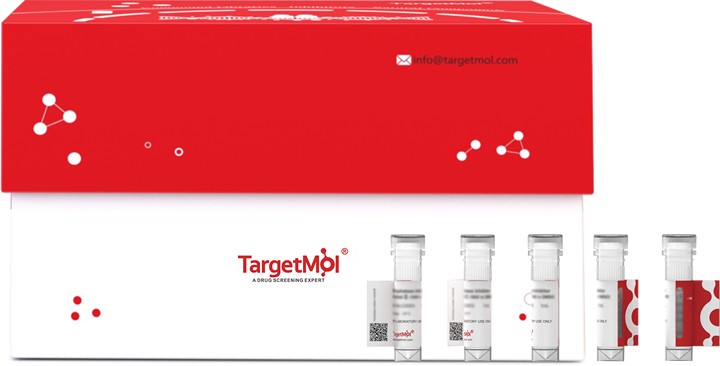

Contributes to multiple aspects of the viral life cycle including viral genome amplification, suppression of suprabasal cell differentiation and egress of newly formed virions. Induces host cell cycle arrest at the G2 phase by associating with and preventing the nuclear entry of host CDK1/cyclin B1 complexes. Inhibits cellular DNA replication by preventing loading of host replication licensing proteins MCM2 and MCM7 onto chromatin. Within the cytoplasm, associates with host kinase SRPK1, a splicing factor regulator, and inhibits its activity. Therefore, E4 favors expression of late viral transcripts by inhibiting SRPK1-mediated phosphorylation of host serine-arginine (SR) proteins that have critical roles in mRNA metabolism. Late in the infectious cycle, E4 also acts to diminish the integrity of the keratinocyte by disrupting the keratin cytoskeleton and inducing apoptosis through alteration of mitochondrial function to facilitate egress of the newly formed virions.

| Pack Size | Availability | Price/USD | Quantity |
|---|---|---|---|
| 20 μg | 20 days | $ 360.00 | |
| 100 μg | 20 days | $ 678.00 | |
| 1 mg | 20 days | $ 2,300.00 |
| Description | Contributes to multiple aspects of the viral life cycle including viral genome amplification, suppression of suprabasal cell differentiation and egress of newly formed virions. Induces host cell cycle arrest at the G2 phase by associating with and preventing the nuclear entry of host CDK1/cyclin B1 complexes. Inhibits cellular DNA replication by preventing loading of host replication licensing proteins MCM2 and MCM7 onto chromatin. Within the cytoplasm, associates with host kinase SRPK1, a splicing factor regulator, and inhibits its activity. Therefore, E4 favors expression of late viral transcripts by inhibiting SRPK1-mediated phosphorylation of host serine-arginine (SR) proteins that have critical roles in mRNA metabolism. Late in the infectious cycle, E4 also acts to diminish the integrity of the keratinocyte by disrupting the keratin cytoskeleton and inducing apoptosis through alteration of mitochondrial function to facilitate egress of the newly formed virions. |
| Species | HPV 6a |
| Expression System | E. coli |
| Tag | N-terminal 10xHis-tagged and C-terminal Myc-tagged |
| Accession Number | Q84295 |
| Amino Acid | MADDSALHKKYPFLNLLHTPPHRPPPLCPQAPRKTQCKRRLENEHEESNSHLATPCVWPTLDPWTVETTTSSLTITTSTKEGTTVTVQLRL Note: The complete sequence including tag sequence, target protein sequence and linker sequence could be provided upon request. |
| Construction | 1-91 aa |
| Protein Purity | > 85% as determined by SDS-PAGE. |
| Molecular Weight | 17.7 kDa (predicted) |
| Formulation | If the delivery form is liquid, the default storage buffer is Tris/PBS-based buffer, 5%-50% glycerol. If the delivery form is lyophilized powder, the buffer before lyophilization is Tris/PBS-based buffer, 6% Trehalose, pH 8.0. |
| Reconstitution | A hardcopy of COA with reconstitution instructions is sent along with the products. Please refer to it for detailed information. |
| Stability & Storage |
Generally, the shelf life of liquid form is 6 months at -20°C/-80°C. The shelf life of lyophilized form is 12 months at -20°C/-80°C. |
| Shipping |
In general, recombinant proteins are provided as lyophilized powder which are shipped at ambient temperature. Bulk packages of recombinant proteins are provided as frozen liquid. They are shipped out with blue ice unless customers require otherwise. |
| Research Background | Contributes to multiple aspects of the viral life cycle including viral genome amplification, suppression of suprabasal cell differentiation and egress of newly formed virions. Induces host cell cycle arrest at the G2 phase by associating with and preventing the nuclear entry of host CDK1/cyclin B1 complexes. Inhibits cellular DNA replication by preventing loading of host replication licensing proteins MCM2 and MCM7 onto chromatin. Within the cytoplasm, associates with host kinase SRPK1, a splicing factor regulator, and inhibits its activity. Therefore, E4 favors expression of late viral transcripts by inhibiting SRPK1-mediated phosphorylation of host serine-arginine (SR) proteins that have critical roles in mRNA metabolism. Late in the infectious cycle, E4 also acts to diminish the integrity of the keratinocyte by disrupting the keratin cytoskeleton and inducing apoptosis through alteration of mitochondrial function to facilitate egress of the newly formed virions. |
bottom
Please read the User Guide of Recombinant Proteins for more specific information.
recombinant recombinant-proteins proteins protein
